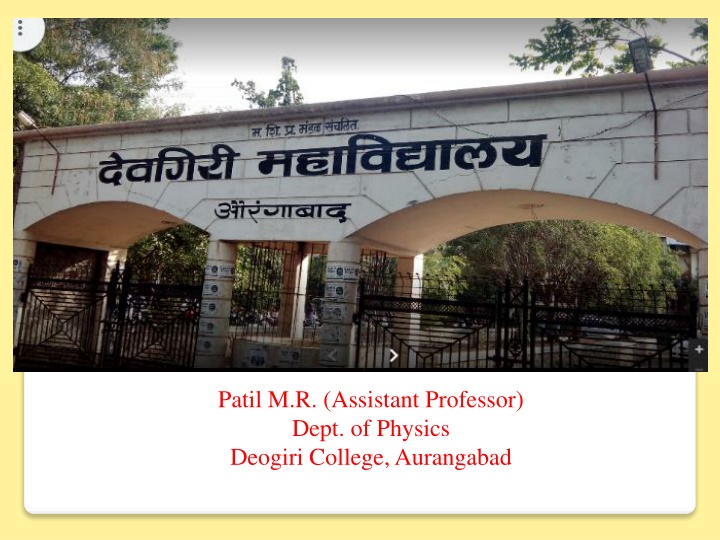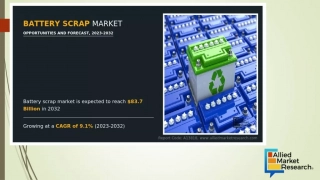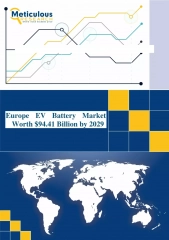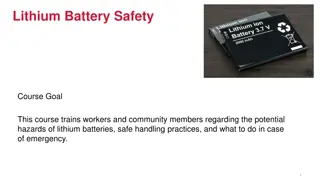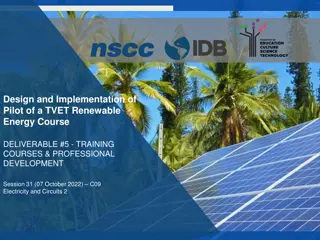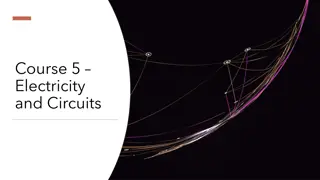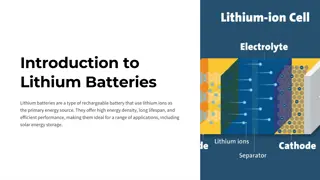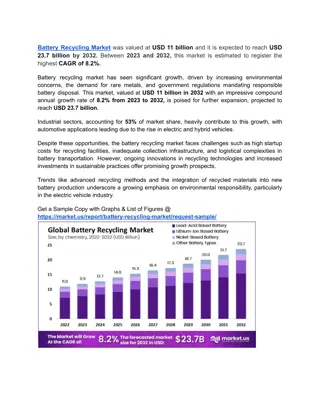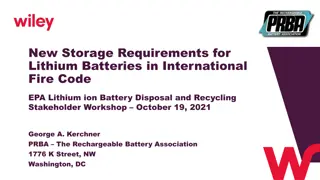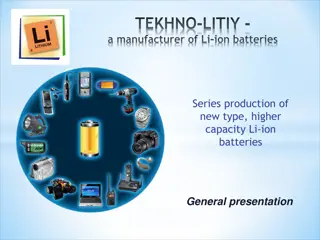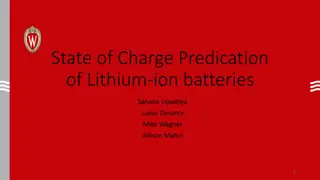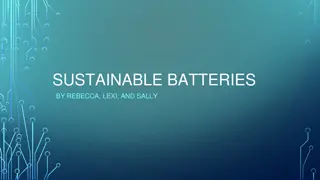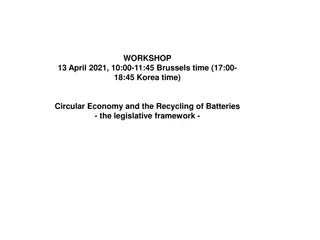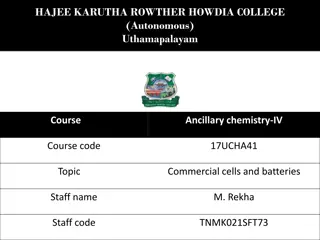Batteries: Importance, Types, and Applications
Batteries are crucial components in various electronic devices, providing a source of electrical energy. Learn about the types of batteries, their significance, and where they are used. Explore the science behind batteries, including voltage, current, and power generation.
Download Presentation

Please find below an Image/Link to download the presentation.
The content on the website is provided AS IS for your information and personal use only. It may not be sold, licensed, or shared on other websites without obtaining consent from the author.If you encounter any issues during the download, it is possible that the publisher has removed the file from their server.
You are allowed to download the files provided on this website for personal or commercial use, subject to the condition that they are used lawfully. All files are the property of their respective owners.
The content on the website is provided AS IS for your information and personal use only. It may not be sold, licensed, or shared on other websites without obtaining consent from the author.
E N D
Presentation Transcript
Patil M.R. (Assistant Professor) Dept. of Physics Deogiri College, Aurangabad
Batteries Batteries What is a battery simple definition? A connected group of (one or more) electrochemical cells that store electric charges and generate direct current (DC) through the conversion of chemical energy into electrical energy. See also common battery battery, DC, electricity, energy, and local battery battery. What is a battery made of? 60% of the battery battery is made made up of a combination of materials like zinc (anode), manganese (cathode) and potassium. These materials are all earth elements. This combination of material is 100% recovered and reused as a micro- nutrient in the production of fertilizer to grow corn.
Where are batteries used? Batteries are used Batteries are used inside the House. Rechargeable batteries batteries such as alkaline batteries are used batteries are used in digital cameras, handheld video game consoles, cell phones, and many more. Advanced batteries batteries like lithium batteries batteries power appliances that draw too much power such as laptops and other. Are batteries AC or DC? Batteries only supply DC voltage voltage and wall plugs only supply AC voltage voltage What are the 2 types of battery? Batteries Batteries are basically classified into 2 types 2 types: 1) Non-rechargeable batteries batteries (primary batteries) 2) Rechargeable batteries batteries (secondary batteries batteries)
Why are batteries so important? Batteries Batteries are essential components of most electrical devices. They exist in our cars, laptops, CD players, and other electronic appliances. A battery battery is is essentially a can full of chemicals that produce electrons. What is the source of a battery? Italian physicist Alessandro Volta built and described the first electrochemical battery, the voltaic pile, in 1800. This was a stack of copper and zinc zinc plates, separated by brine-soaked paper disks, that could produce a steady current for a considerable length of time.
What Does a Battery Provide? Batteries do supply current just not a constant current More relevantly, batteries supply a constant voltage D-cell is about 1.5 volts What is a voltage? Voltage is much like a potential energy the higher the voltage, the more work can be done it takes one Joule to push one Coulomb through one Volt so a Volt is a Joule per Coulomb (J/C)
Voltage, Current, and Power One Volt is a Joule per Coulomb (J/C) One Amp of current is one Coulomb per second If I have one volt (J/C) and one amp (C/s), then multiplying gives Joules per second (J/s) this is power: J/s = Watts So the formula for electrical power is just: P = VI: power = voltage current More work is done per unit time the higher the voltage and/or the higher the current
Voltage Sources Voltage Source: A device which provides a potential difference in order to keep current flowing Dry/Wet Cells: Convert chemical energy to electrical energy Generators: Convert mechanical energy to electrical energy The voltage available to electrons moving between terminals is called electromotive force, or emf. Note: Voltage flows across a circuit Current flows through a circuit
Which object yielded the highest potential difference? Which arrangement yielded the most potential difference? What are two types of voltage sources?
Current vs. Voltage Current Flow rate Measured in Amperes Amount of flowing water Voltage Potential Measured in Volts Water Pressure Electric Resistance Electric Resistance: The ability of a material to resist the flow of charge Units: Ohms (W) The amount of charge that flows through a circuit depends on two things: Voltage provided by source Electric resistance of the conductor
Outline Why is this important? Brief history of batteries Basic chemistry Battery types and characteristics Case study: ThinkPad battery technology
Battery (Ancient) History 1800 1836 1859 1868 1888 1898 1899 1946 1960s 1970s 1990 1991 1992 1999 Voltaic pile: silver zinc Daniell cell: copper zinc Plant : rechargeable lead-acid cell Leclanch : carbon zinc wet cell Gassner: carbon zinc dry cell Commercial flashlight, D cell Junger: nickel cadmium cell Neumann: sealed NiCd Alkaline, rechargeable NiCd Lithium, sealed lead acid Nickel metal hydride (NiMH) Lithium ion Rechargeable alkaline Lithium ion polymer
Battery Nomenclature Duracell batteries 9v battery 6v dry cell A real battery Two cells Another battery More precisely
The Battery Main Entry: storage battery Function: noun Date: 1881 : a cell or connected group of cells that converts chemical energy into electrical energy by reversible chemical reactions and that may be recharged by passing a current through it in the direction opposite to that of its discharge -- called also storage cell.
Battery HAZARDOUS CONSTITUENT POSSIBLE EFFECTS Corrosive, causes severe skin burns, and can cause blindness. Causes nerve and kidney damage, suspected carcinogen SULFURIC ACID LEAD
Types of Batteries The primary batteryconverts chemical energy to electrical energydirectly, using the chemical materials within the cell to start the action. The secondary battery must first be charged with electrical energy before it can convert chemical energy to electrical energy. The secondary battery is frequently called a storage battery, since it stores the energy that is supplied to it.
DRY CELL Uses An electrolytic paste. The electrolytic paste reacts with the electrodes to produce a negative charge on one electrode and a positive charge on the other. The difference of potential between the two electrodes is the output voltage.
Lead Acid Battery Electrolyte for the most part distilled (pure) water, with some sulfuric acid mixed with the water. Electrodes must be of dissimilar metals. An active electrolyte.
Cells Positive electrode Negative electrode Electrolyte Separator
The basic primary wet cell The metals in a cell are called the electrodes, and the chemical solution is called the electrolyte. The electrolyte reacts oppositely with the two different electrodes It causes one electrode to lose electrons and develop a positive charge; and it causes one other electrode to build a surplus of electrons and develop a negative charge. The difference in potential between the two electrode charges is the cell voltage.
The Electrolyte When charging first started, electrolysis broke down each water molecule (H2O) into two hydrogen ions (H+) and one oxygen ion (O-2). The positive hydrogen ions attracted negative sulfate ions (SO4-2) from each electrode. These combinations produce H2SO4, which is sulfuric acid.
Electrolysis The producing of chemical changes by passage of an electric current through an electrolyte.
Series Connected Batteries Positive terminal of one cell is connected to the negative terminal of the next, is called a series connected battery. The voltage of this type of battery is the sum of a individual cell voltages.
Series-Parallel Connections POOOARAL LEL PARALLEL SERIES
1. Battery Chemistries The ideal battery does not yet exist
